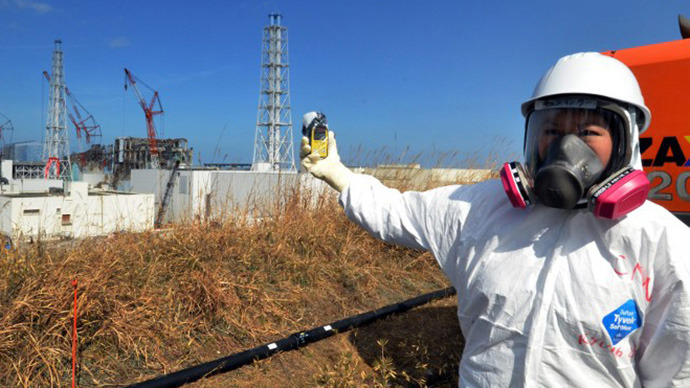
Following the 1986 Chernobyl nuclear power plant meltdown, biological samples were obtained only after extensive delays, limiting the information that could be gained about the impacts of that historic disaster. Determined not to repeat the shortcomings of the Chernobyl studies, scientists began gathering biological information only a few months after the disastrous meltdown of the Fukushima Daiichi power plant in Japan in 2011. Results of these studies are now beginning to reveal serious biological effects of the Fukushima radiation on non-human organisms ranging from plants to butterflies to birds.
A series of articles summarizing these studies has now been published in the Journal of Heredity. These describe widespread impacts, ranging from population declines to genetic damage to responses by the repair mechanisms that help organisms cope with radiation exposure.
“A growing body of empirical results from studies of birds, monkeys, butterflies, and other insects suggests that some species have been significantly impacted by the radioactive releases related to the Fukushima disaster,” stated Dr. Timothy Mousseau of the University of South Carolina, lead author of one of the studies.
Most importantly, these studies supply a baseline for future research on the effects of ionizing radiation exposure to the environment. “The massive release of ionizing radiation to areas near nuclear power plants may cause major irreversible shifts in ecosystems and severe damage to human health,” warn Drs. Tomoko Steen and Timothy Mousseau. “… [U]nderstanding the risks and quantifying the outcomes of nuclear accidents is of global concern.”
Insidious effects of radiation exposure
Common to all of the published studies is the hypothesis that chronic (low-dose) exposure to ionizing radiation results in permanent genetic damage and increased mutation rates in reproductive and non-reproductive cells.
Interestingly, researchers found that instead of outright killing or obviously harming organisms, the low-dose radiation effects were insidious. For instance, one of the studies (Hayashi et al. 2014) documented the effects of radiation on rice by exposing healthy seedlings to low-level gamma radiation at a contaminated site in Fukushima Prefecture. After just three days, a number of effects were observed as the radiation began to alter healthy seedlings on a genetic level, hampering the activation of self defense traits and altering DNA replication.
“The experimental design employed in this work will provide a new way to test how the entire rice plant genome responds to ionizing radiation under field conditions,” explained Dr. Randeep Rakwal of the University of Tsukuba in Japan, one of the authors of the study.
Another team of researchers (Taira et al. 2014) examined the response of the pale grass blue butterfly, one of the most common butterfly species in Japan, to radiation exposure at the Fukushima site. They found size reduction, slowed growth, high mortality and morphological abnormality both at the Fukushima site and among laboratory-bred butterflies with parents collected from the contaminated site.
Multiple sources of exposure were included in the butterfly study. “Non-contaminated larvae fed leaves from contaminated host plants collected near the reactor showed high rates of abnormality and mortality,” explained Dr. Joji Otaki of the University of the Ryukyus in Okinawa, Japan. Some of their results suggested the possible evolution of radiation resistance in Fukushima butterflies as well.
A review of genetic and ecological studies for a range of other species at both Chernobyl and Fukushima (Mousseau 2014) revealed significant consequences of radiation. Population censuses of birds, butterflies, and cicadas at Fukushima showed major declines attributable to radiation exposure. Morphological effects, such as aberrant feathers on barn swallows, were also observed. The authors suggest that long-term studies at Chernobyl could predict likely effects in the future at the Fukushima site.
All of these studies highlight the need for early and ongoing monitoring at sites of accidental radiation release. “Detailed analyses of genetic impacts to natural populations could provide the information needed to predict recovery times for wild communities at Fukushima as well as any sites of future nuclear accidents,” Mousseau said. “There is an urgent need for greater investment in basic scientific research of the wild animals and plants of Fukushima.”
Indeed, while research has not yet documented widespread human health effects resulting from the accident, scientists are closely monitoring long-term outcomes among those exposed to the radiation. Those most at risk include residents of the areas directly surrounding the radiation plant, for whom the risk of cancer is expected to increase by anywhere from 6-7 percent (for leukemia and breast cancer) to 70 percent (for thyroid cancer). According to the World Health Organization, continued monitoring and health screening for those people “will remain an important element in the public health response to the disaster for decades.”
